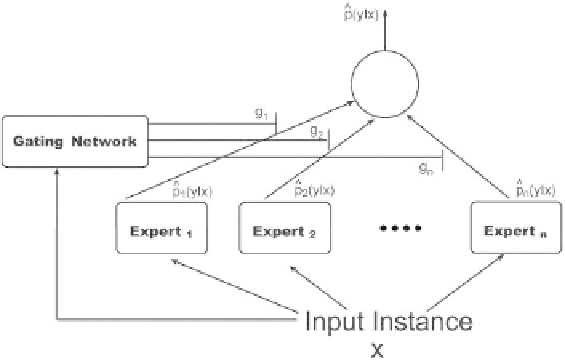Database Reference
In-Depth Information
Fig. 9.3
Illustration of
n
-expert structure.
9.3.1.12
Gating Network
Figure 9.3 illustrates an
n
-expert structure. Each expert outputs the
conditional probability of the target attribute given the input instance.
A gating network is responsible for combining the various experts by
assigning a weight to each network. These weights are not constant but
are functions of the input instance
x
. The gating network selects one or a
few experts (classifiers) which appear to have the most appropriate class
distribution for the example. In fact, each expert specializes on a small
portion of the input space.
An extension to the basic mixture of experts, known as hierarchical
mixtures of experts (HME), has been proposed in
[
Jordan and Jacobs
(1994)
]
. This extension decomposes the space into sub-spaces, and then
recursively decomposes each sub-space into sub-spaces.
Variations of the basic mixture of experts methods have been developed
to accommodate specific domain problems. A specialized modular networks
called the Meta-
p
i
network has been used to solve the vowel-speaker prob-
lem
[
Hampshire and Waibel (1992); Peng
et al
. (1996)
]
. There have been
other extensions, such as nonlinear gated experts for time-series
[
Weigend
et al
. (1995)
]
; revised modular network for predicting the survival of AIDS
patients
[
Ohno-Machado and Musen (1997)
]
; and a new approach for
combining multiple experts for improving handwritten numeral recognition
[
Rahman and Fairhurst (1997)
]
.








Search WWH ::

Custom Search